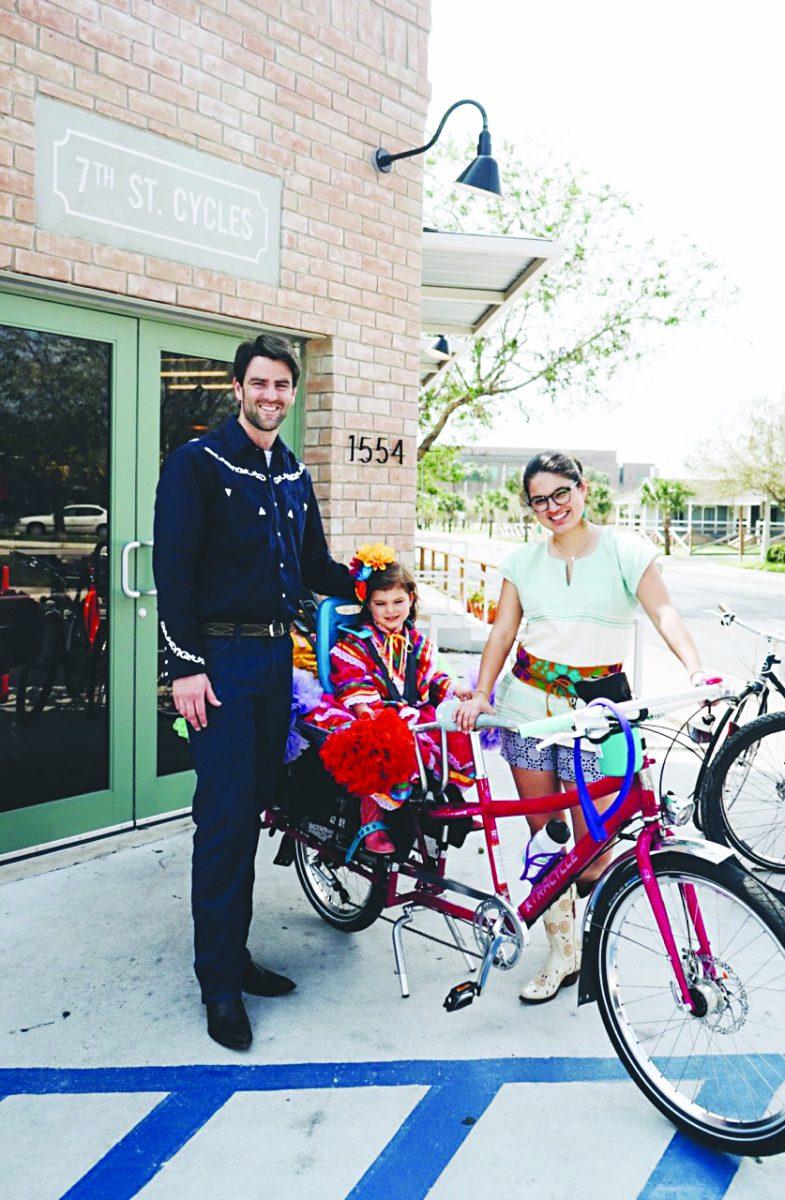In Brownsville, Texas, only blocks from the United States-Mexico border, one UTD alumnus works alongside Mexican citizens in the coffee shop he opened two years back.
Graham Sevier-Schultz graduated from UTD in 2012 with a degree in interdisciplinary studies. He stayed in Dallas, working at restaurants and cafes to gain experience and ideas while preparing to open his own Brownsville business — a combination of a coffee shop and a bike shop.
7th & Park opened in early 2017, named after both its location and the park where Sevier-Schultz sold coffee at a farmer’s market for two years in preparation for the launch of his own business. He spent those years getting to know the border region of Brownsville and gauging local interest in items he calls “third wave coffee,” such as cappuccinos and latte art.
“We’re full service for bikes — we’ll work on your bike or sell you a new one — but my main aspect is to facilitate the culture because both coffee culture and bike culture are very strong, unique and involved,” Sevier-Schultz said. “They’re both pretty social and specific. There are bike stores where you go in and buy something, but you don’t hang out. I wanted a place where people would be comfortable and want to come hang out.”
7th & Park services bicycles and serves lattes just down the street is the federal courthouse with the busiest docket in the federal system. Sevier-Schultz said when illegal border crossings started being classified as criminal offenses, all those caught going across the border had to go through the legal system, and the courthouse went from processing around 40 cases a day to 145.
“That got a lot of attention and a lot of activity, so I’ve had journalists come in for two, three days and to use the Wi-Fi and write their story and drink some coffee,” he said. “It’s put people like myself in contact with a lot of these reporters and photojournalists where we can give them firsthand accounts and give them our experience at the border.”
Sevier-Schultz said he has had at least two journalists who came back after their initial story to write lifestyle pieces on people at the border.
“We want people to come travel here and realize the emergency could be fixed with education and funding instead of money spent on a wall,” he said.
President Trump remains committed to building a wall along the United States-Mexico border. The issue sat at the crux of the recent government shutdown that ended Jan. 25 and was mentioned again in the president’s State of the Union address on Feb. 5.
“It’s a little weird when you hear the president consider declaring an emergency in order to justify building a wall because I’ve lived here for four years, and I know people who’ve lived here their whole life, and it’s safer than it was seven years ago,” he said. “There’s no such thing as a national emergency happening. The only emergency is the educational system, which could be much better for poorer students here.”
Across the Rio Grande sits Matamoros, Mexico, from which a number of Sevier-Schultz’s friends and colleagues commute every day.
“The border is a strange thing. If you’re not near the border it feels like a very definite thing,” he said. “The way I think of it now is that it’s similar to the tide at a coastline — it flows in and out at certain times, and we have a lot of traffic across the border each day — people going to work. Here, there’s a lot of undocumented residents. It’s part of the culture. At some point, Brownsville was in Mexico. I keep that in mind for the whole region.”
He said he doesn’t see the number of undocumented people in Brownsville as a security risk, but as a piece of its history.
“You could ask around in Brownsville and find a lot of people that are first-generation American citizens whose parents grew up in Brownsville,” he said. “There’s this muddy water of people born in Matamoros and have lived here 40, 50 years, but their birthplace isn’t clear because you could get a midwife to say they were a witness at your birth in Brownsville.”
Sevier-Schultz said his wife’s family has lived in the Brownsville region for a while, and somewhere down the family tree she has a distant uncle who lived right near the border. His ranch sat on the Mexico side of the Rio Grande, until a storm came.
“There was a heavy rainfall and the river changed course, and when it did that, he went from living in Mexico to living in the US without having moved at all,” he said. “All of a sudden he was given the choice from the US government to become a US citizen or give up his property. It shows the flexibility of this region and the history you won’t find in many other places.”
There is a segment of the Rio Grande that is sometimes less than 35 feet wide, where the salt water of the Gulf of Mexico mingles with the freshwater of the river.
“That brackish water, to me, illustrates the border,” Sevier-Schultz said. “Those two cultures, the blurring of the two countries, not a definite line where the two are absolutely divided. That’s how close our cultures are down here.”







